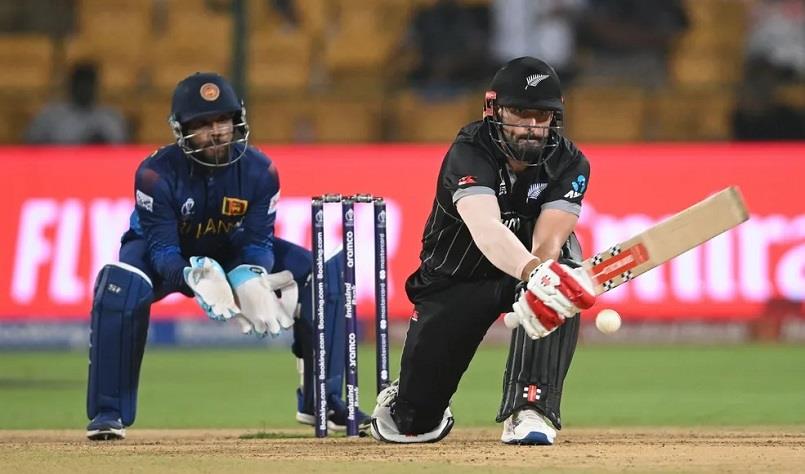(MENAFN- Kashmir Observer) Historical Roots and Colonial Legacy
The widespread popularity of cricket can be traced back to its colonial roots. The game originated in England during the 16th century, evolving from earlier bat-and-ball games played in the country's southeast. By the 18th century, cricket had become a well-organized Sport with established rules and widespread appeal among English society.
As the British Empire expanded in the 19th and early 20th centuries, cricket spread to its colonies, becoming a symbol of British culture and a tool for social cohesion. Countries like India, Pakistan, Australia, South Africa, and the West Indies, part of the British Empire, adopted the sport and integrated it into their own cultures. British officials, military personnel, and settlers introduced cricket to these regions, establishing clubs and organising matches, often to assert colonial dominance and reinforce social hierarchies.
Read Also
Williamson Steps Down As New Zealand's White-Ball Captain, Declines National Contract
Umran Malik Selected For High Performance Monitoring Program
In India, for instance, cricket was initially played by British elites and Indian royalty, but it gradually permeated all levels of society. By the early 20th century, local cricket clubs had formed, and inter-community matches became a popular feature of urban life. Establishing the Ranji Trophy in 1934 further institutionalised the sport in India, leading to a robust domestic cricket structure.
In the Caribbean, cricket became a unifying force among the islands of the West Indies. Despite their diverse cultures and languages, the shared passion for cricket helped foster a regional identity. The West Indies team, representing multiple nations, became a symbol of excellence and pride, especially during their dominance of international cricket in the 1970s and 1980s.
Australia and South Africa also embraced cricket, integrating it into their national identities. Australia's first Test match against England in 1877 began a fierce and enduring rivalry known as the Ashes. South Africa, despite the interruptions caused by apartheid, has maintained a strong cricketing tradition, with its reintroduction into international cricket in the 1990s being a significant moment in the sport's history.
Even after gaining independence, these nations continued to embrace cricket with fervour. The historical connection created a strong foundation, and cricket became more than just a sport; it was a link to their colonial past and a means of forging a new, independent identity. This deep-rooted connection to history and culture has played a significant role in cricket's sustained popularity, making it a beloved and integral part of life in many former British colonies.
Cultural Significance and National Identity
In many countries, cricket is more than just a game; it is an integral part of their cultural identity. In India, for instance, cricket is often referred to as a religion, with players like Sachin Tendulkar worshipped as demigods. The sport is a unifying force, bringing together people from diverse backgrounds and regions. The passion for cricket transcends social, economic, and linguistic barriers, fostering a sense of national pride and unity. This cultural significance makes cricket an enduring obsession for millions.
Drama and Unpredictability
Cricket is an exciting and unpredictable game. Matches can quickly change direction, which keeps fans engaged. Exciting moments like the last ball, tense chases, and hat-tricks make cricket thrilling. Each match is unique and creates lasting memories for fans.
Star Power and Hero Worship
Cricket stars are larger than life; their charisma spills beyond the playing arena. For instance, legends such as Sir Donald Bradman, Viv Richards, Imran Khan, and contemporary icons like Virat Kohli, Ben Stokes and AB De Villiers have made cricketing themselves household names. On-field exploits combined with off-field identities have earned them an ardent following. This hero worship directed towards these cricketing greats fuels obsession among followers who passionately keep track of their performances, both good and bad. At the same time, they try to identify with them when they have performed poorly.
The Evolution of Formats
The Development of Formats Cricket has showcased unbelievable adaptability and flexibility. The game changed completely with One Day Internationals (ODIs) and Twenty20 (T20) cricket. Cricket is now more open to all kinds of people in terms of its formats, particularly those popular among younger people. This is because T20 cricket has been dubbed a“hit it out the park” form of cricket as it encourages players to go for big hits and quick results. Our fast-paced lifestyle today means that the evolution of formats in cricket allows it to remain relevant and exciting.
Global Reach and Media Coverage
The advent of television and digital media has played a crucial role in popularising cricket worldwide. Live broadcasts, in-depth analysis, and extensive media coverage have brought the sport into the living rooms of millions. The proliferation of social media platforms has further amplified cricket's reach, allowing fans to engage with the game and their favourite players in real-time. Cricket's global reach, coupled with the accessibility provided by modern media, has created a massive and engaged fan base.
Follow this link to join our WhatsApp group : Join Now
























Comments
No comment